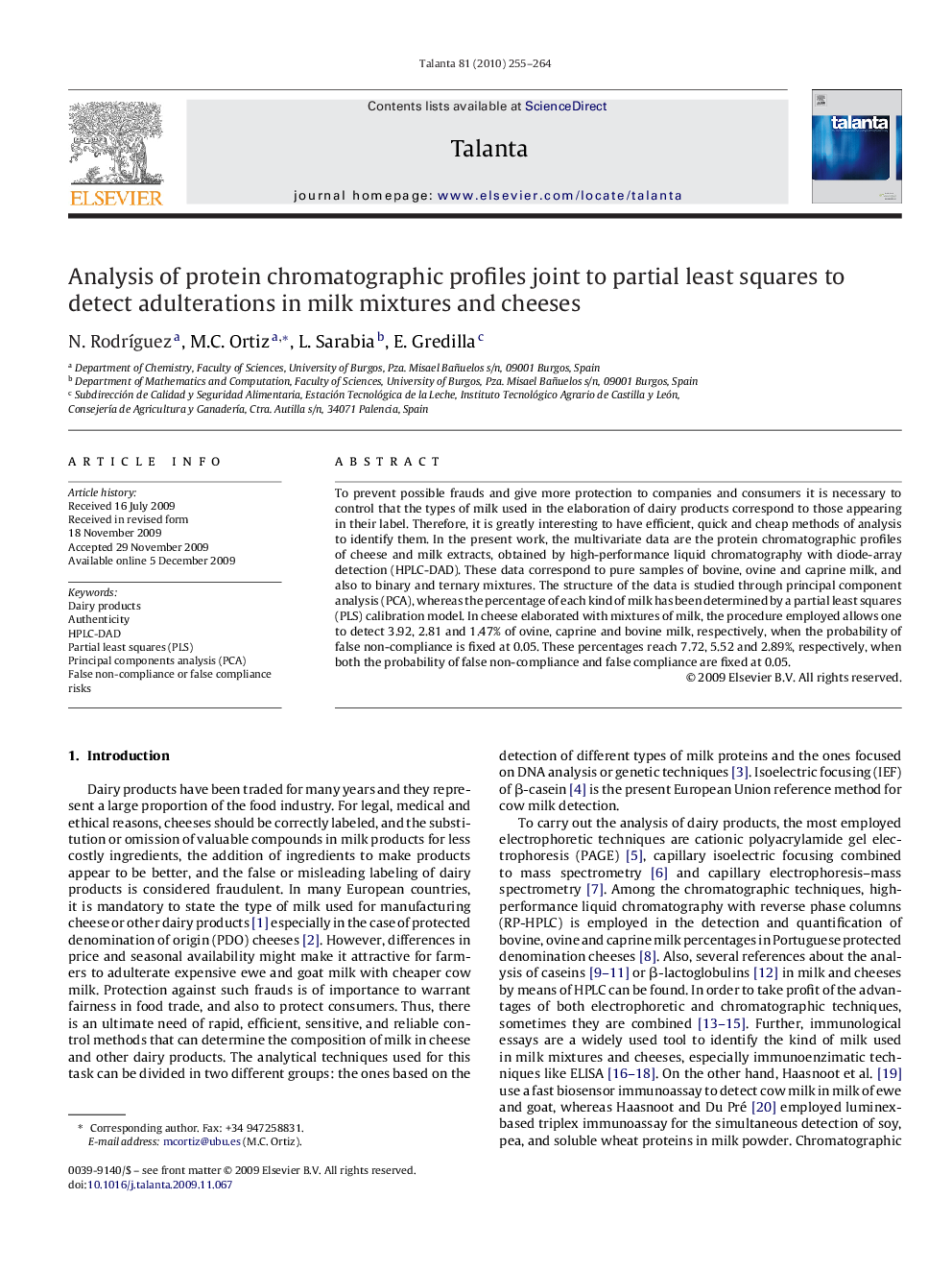| Article ID | Journal | Published Year | Pages | File Type |
|---|---|---|---|---|
| 1246643 | Talanta | 2010 | 10 Pages |
To prevent possible frauds and give more protection to companies and consumers it is necessary to control that the types of milk used in the elaboration of dairy products correspond to those appearing in their label. Therefore, it is greatly interesting to have efficient, quick and cheap methods of analysis to identify them. In the present work, the multivariate data are the protein chromatographic profiles of cheese and milk extracts, obtained by high-performance liquid chromatography with diode-array detection (HPLC-DAD). These data correspond to pure samples of bovine, ovine and caprine milk, and also to binary and ternary mixtures. The structure of the data is studied through principal component analysis (PCA), whereas the percentage of each kind of milk has been determined by a partial least squares (PLS) calibration model. In cheese elaborated with mixtures of milk, the procedure employed allows one to detect 3.92, 2.81 and 1.47% of ovine, caprine and bovine milk, respectively, when the probability of false non-compliance is fixed at 0.05. These percentages reach 7.72, 5.52 and 2.89%, respectively, when both the probability of false non-compliance and false compliance are fixed at 0.05.
